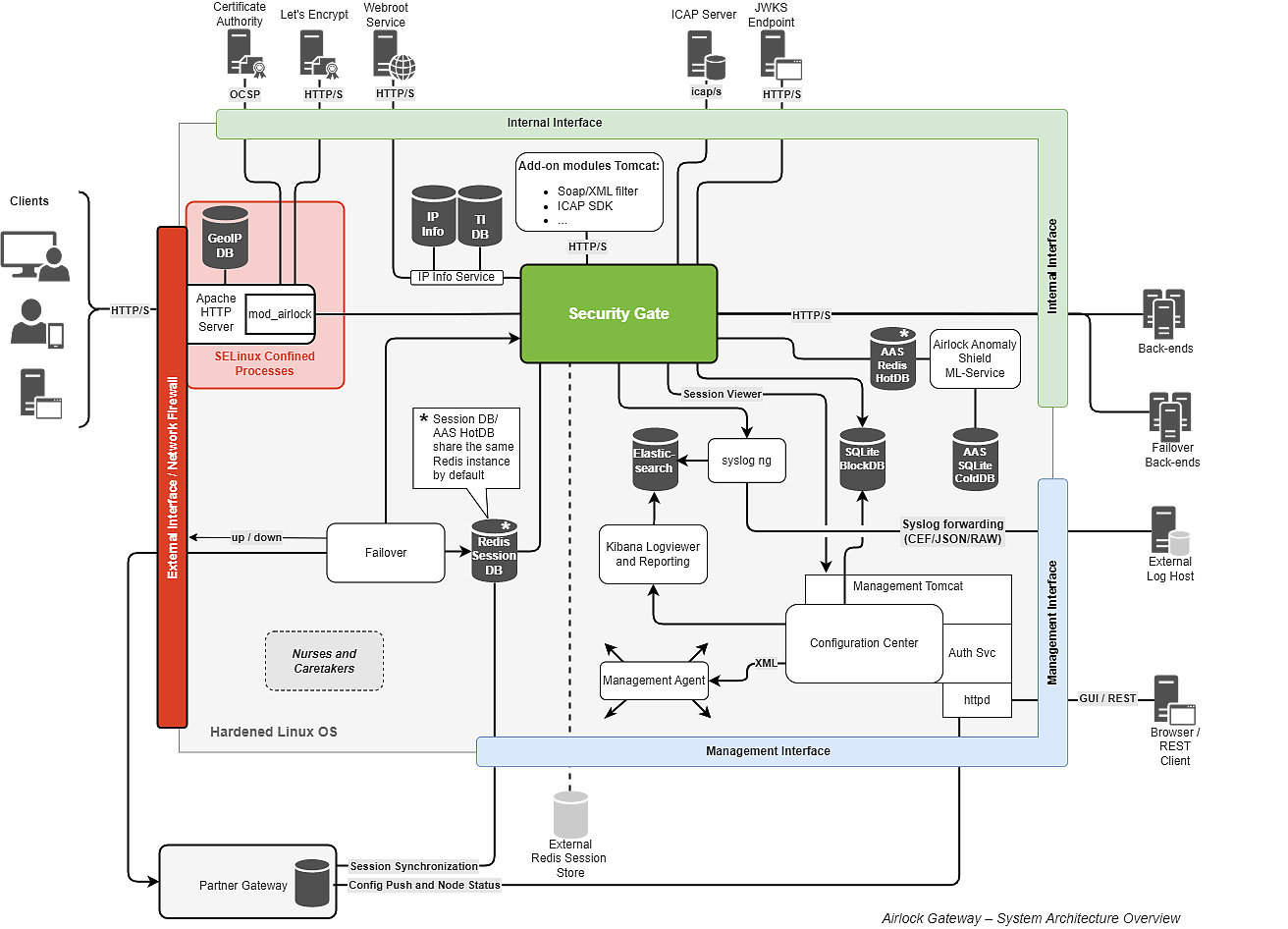Within the Airlock Secure Access Hub, Airlock Gateway acts as a central reverse proxy for all HTTPS connections and protects against web attacks.
Airlock Gateway analyses all the traffic to the services and applications under protection, blocking attempted attacks long before they reach in-house services. Airlock Gateway provides comprehensive protection against OWASP Top 10 vulnerabilities, enabling centralized management of security guidelines.

Airlock Gateway works in conjunction with Airlock IAM to ensure secure session management while serving as a policy enforcement point for authentication and authorization decisions. Following DevOps principles, a cascaded setup with Airlock Gateway and Airlock Microgateway allows a DevSecOps culture, i.e. is an architecture for securing microservices.
